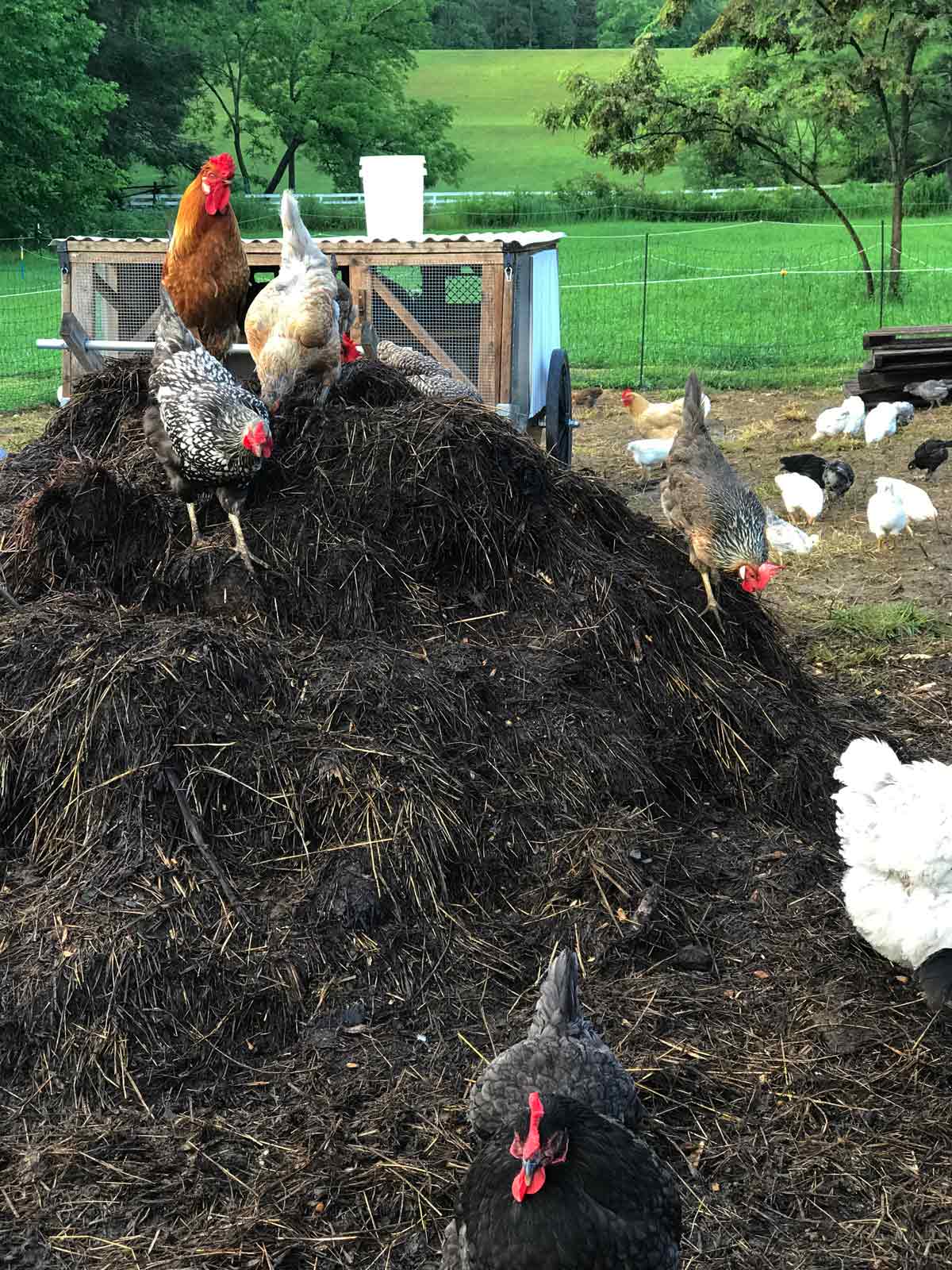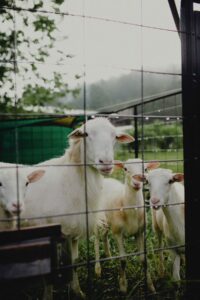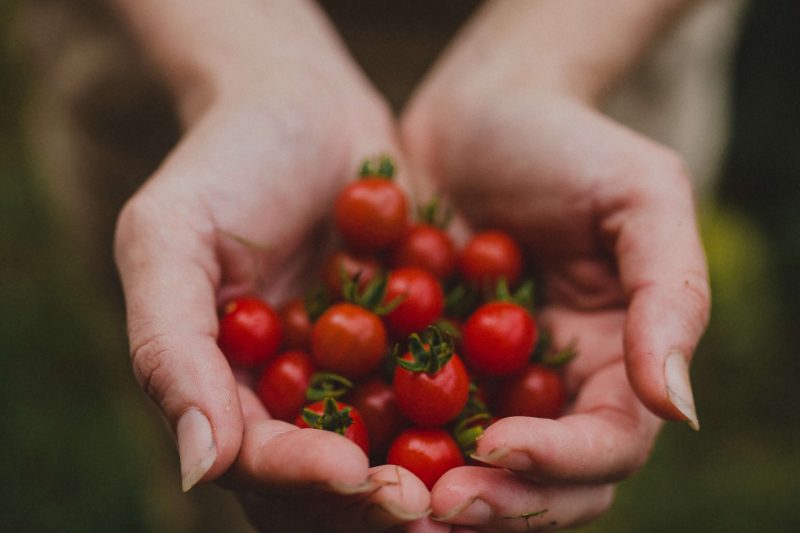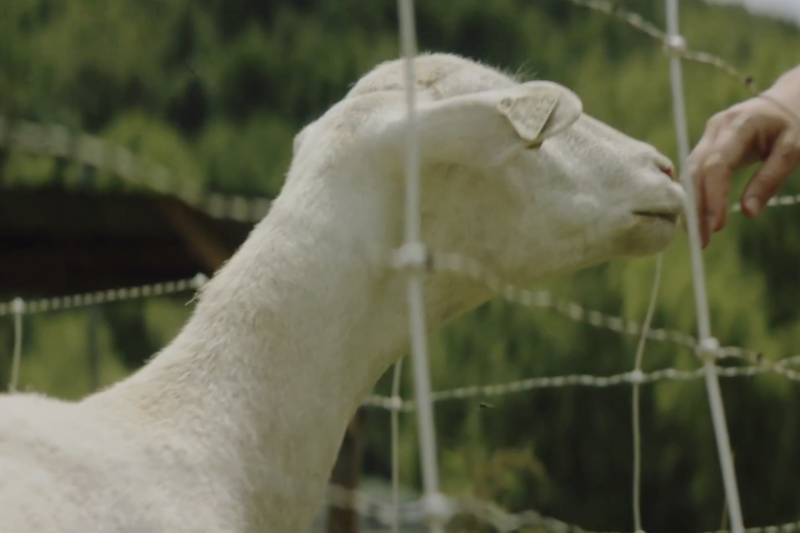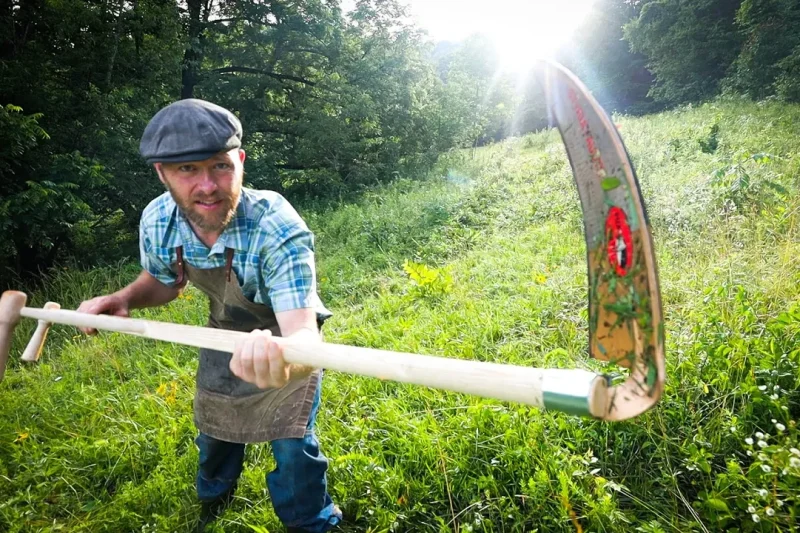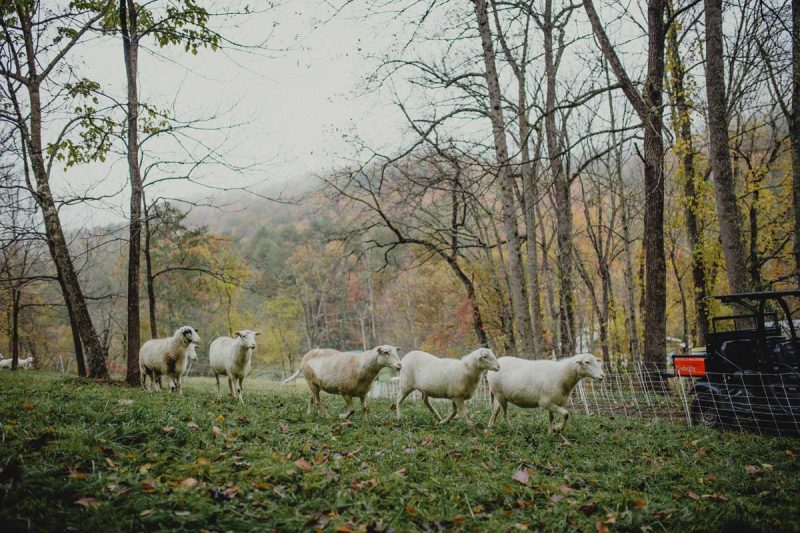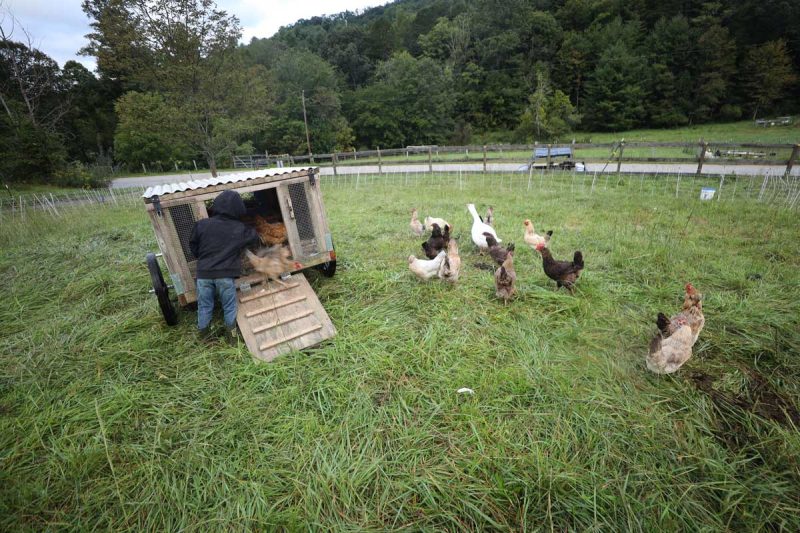There are several ways that chickens can help around the homestead. Whether they’re tilling and fertilizing the garden, helping the land by utilizing the permaculture approach with chickens, or having your chickens help control pests in your orchards.
Chickens are also fantastic helpers when wanting to add compost to your garden. The natural tendency of chickens is to scratch and peck which results in turning the soil. They move anything that is piled up, including their nitrogen-rich manure.
Not only do they work within their chicken run, but they also work on your compost pile if you give them access. Follow along as I explain how you can use chickens to provide nitrogen for your compost pile, turn compost, and spread the compost mulch.
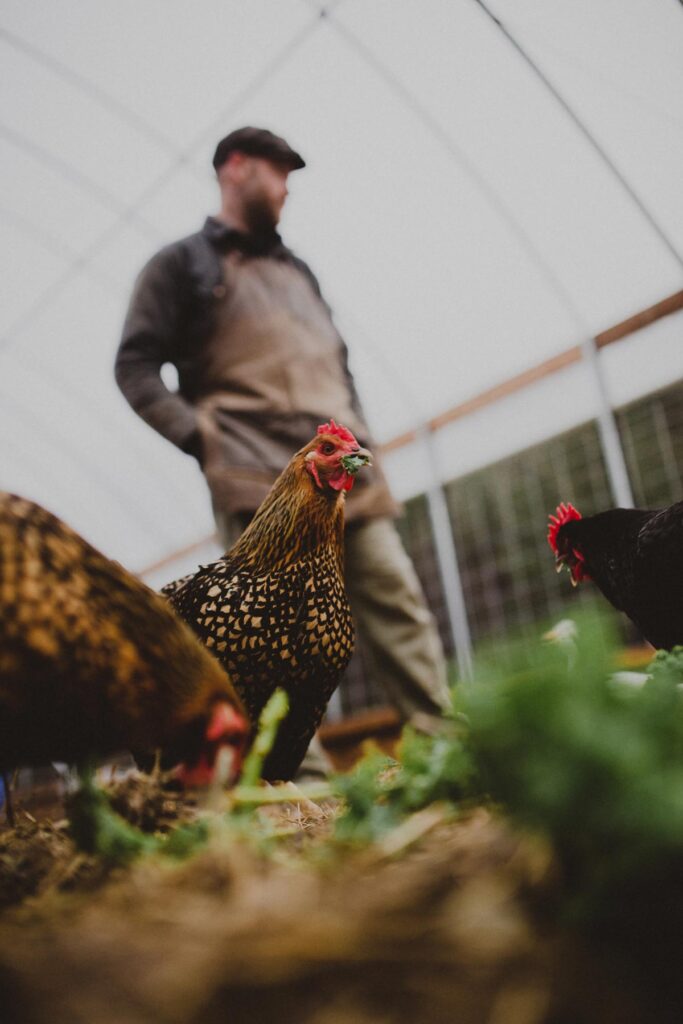
Turning Food Waste into Chicken Food
Chickens can convert your food waste into fresh eggs and meat, and we all know what else they produce. Why not give our food scraps to our chickens, save money on trash disposal, and lessen the burden of our landfills?
Chickens are omnivores like us and will eat practically everything we can, and more! Based on my experience, chickens will easily eat 1/4 to 1/3 pound of food waste in a single day. That means a small flock of 6 could eat up to 60 pounds of food waste a month!
Supplies Needed:
- Food Waste – In addition to kitchen scraps, collect any waste from your garden as you harvest and weed.
- Food Grade Bucket – Any container will work, but make sure it is food grade so that it is safe for your chickens.

How to Turn Food Waste into Chicken Food
- Collect food waste, and keep it fresh by using right away or keeping it cool to prevent spoilage. Never feed moldy food to chickens. It can make them sick too.
- Spread food waste on the ground where it is accessible to the chickens. Pro-Tip: Chickens seem to be happier if they can scratch for their food. Spread your food scraps on the ground instead of giving it to them in a container.
- If you’re not sure if a food is safe for your chickens, try it and see what they do. I believe they have the sense to know whether it’s good for them or bad.
- For more information and a list of what you should and shouldn’t feed to chickens, read how to cut your chicken feeding costs 100%.

Does Chicken Manure Make Good Compost?
According to Ohio State University, one chicken can produce 8 pounds of manure a month which is approximately enough to compost one cubic yard of leaves! To make great compost, you need a carbon to nitrogen (C: N) ratio of about 30:1.
Chicken manure is very rich in nitrogen and has a C:N ratio of 10:1. The high nitrogen content means you won’t need much of it to balance it with its readily available counterparts (carbon materials like leaves, hay or straw).
Leaves, for example, are rated at 47:1, so for every pound of chicken manure, you’ll use 45 pounds of leaves! A little goes a long way with chicken manure!
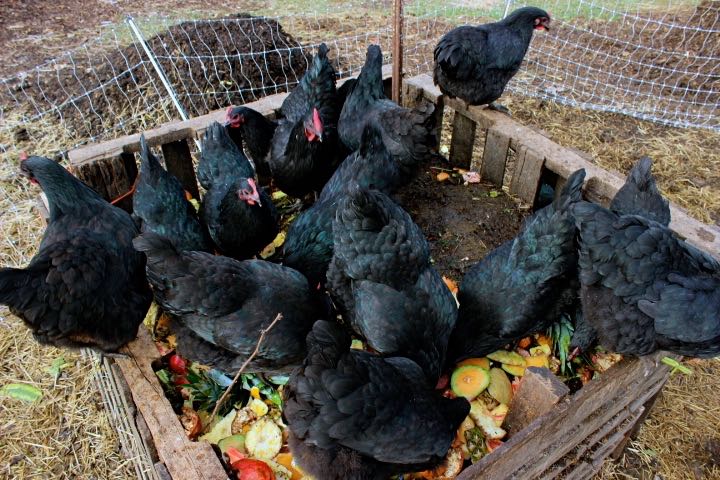
Supplies Needed for Chickens to Turn and Spread Compost
- Leach Proof Container – Harvest your flock’s manure regularly and store it in a leach-proof container until you’re ready to build your pile. If you don’t want to store poop, then you can mix the manure with your carbon material as you go.
- Compost Pile – If you need to protect your pile while it heats up, you can put it in a protective bin, temporarily fence it off, or keep it covered.
- Chickens – My flock of 30 made for quick work, but any number of chickens will do. The more chickens, the faster the turnaround time.

How to Use Chickens to Turn and Spread Compost
For your compost to break down, it must get oxygen. The more air you give it, the quicker it will break down.
Many gardeners make a habit of turning their entire compost pile regularly when they need some of the precious material quickly. Turning is a laborious job, but your chickens can do at least a quarter of the work for you!
I estimate that they are doing a quarter of the work because they won’t take down the entire pile, and they certainly won’t re-stack it for you. However, they will take down a good chunk of it, and all you will have to do is turn what they left and then reassemble.
One chicken can level a large pile of leaf mulch within two days. Imagine what a flock of chickens can accomplish.

If I want to spread mulch or compost, I just pile the material where I need it spread out and fence in my chickens around the pile. The time it takes to spread the pile will depend on the size, type, and age of the material.
Older material will have more biota, and the chickens will show more interest. Pro-Tip: If your chickens aren’t showing interest in a pile you want to spread (like fresh wood chips), try spreading their feed on the pile, so they have to scratch for it!
My flock of 30 can quickly spread a large pile of leaves in half a day and one cubic yard of compost within two weeks!
- Assemble your compost pile and allow it time to heat up. If it has fresh ingredients, your chickens won’t show much interest. Once it’s warmed up and has time to start to decompose, it will be swarming with life.
- Once the pile warms up, your chickens will show great interest in the live biota in the pile.
- Later, come back and re-assemble the pile. I reassemble and turn the piles once a week, and within four weeks, I have finished compost!
- To spread the finished compost, confine your chickens around a pile of mulch or compost where you want it spread, and leave the chickens until the work is done.
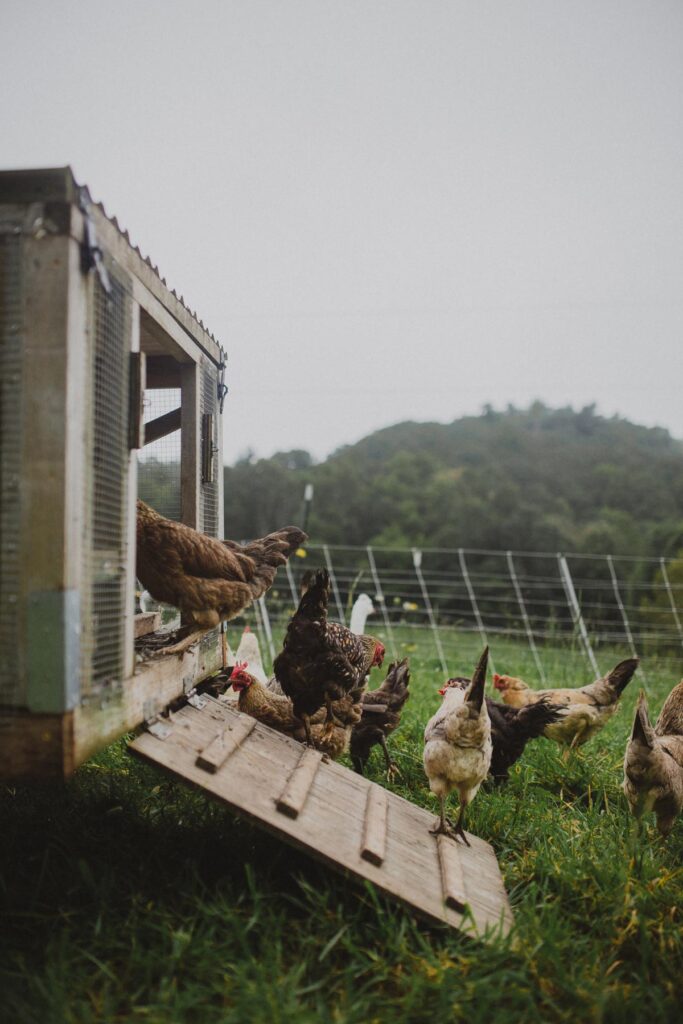
More Posts You May Enjoy
- How to Set Up an Electric Fence on the Homestead
- Mixing Your Own Chicken Feed
- ChickShaw-A Mobile Chicken Coop One Person Can Easily Move
- How to Keep Chickens Warm in Winter
- Mineral Supplements for Animals
- Soil Testing – Don’t Overlook This Crucial Step
- Raising Meat Chickens
- How to Grow More Food in Less Time (In Less Than 10 Hours A Week)
- Five Stages for Success With Breeding Chickens
- Using the Permaculture Approach for Your Chicken Flock
- Homestead Planning the Right Way
- How to Buy Homestead & What to Look For in a Homestead Property
- Your Land Will Tell You How To Homestead
- Best Herbs for Chickens-How to “Herbify” Your Chickens Like Lisa Steele

